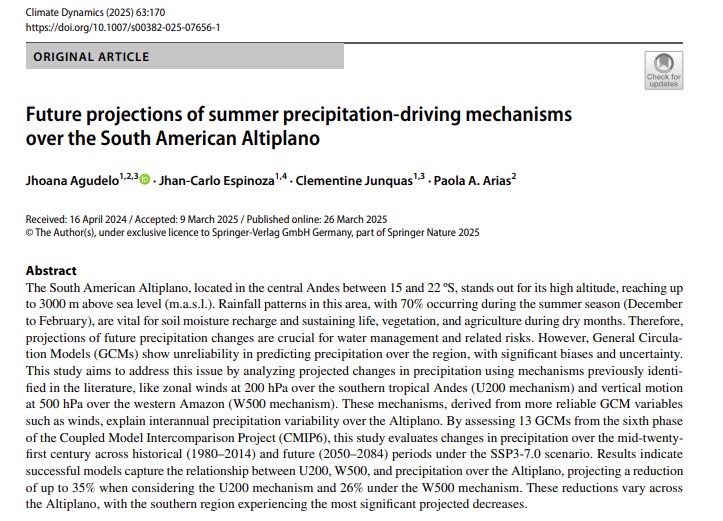ABSTRACT
The South American Altiplano, located in the central Andes between 15 and 22 ºS, stands out for its high altitude, reaching up to 3000 m above sea level (m.a.s.l.). Rainfall patterns in this area, with 70% occurring during the summer season (December to February), are vital for soil moisture recharge and sustaining life, vegetation, and agriculture during dry months. Therefore, projections of future precipitation changes are crucial for water management and related risks. However, General Circulation Models (GCMs) show unreliability in predicting precipitation over the region, with significant biases and uncertainty. This study aims to address this issue by analyzing projected changes in precipitation using mechanisms previously identified in the literature, like zonal winds at 200 hPa over the southern tropical Andes (U200 mechanism) and vertical motion at 500 hPa over the western Amazon (W500 mechanism). These mechanisms, derived from more reliable GCM variables such as winds, explain interannual precipitation variability over the Altiplano. By assessing 13 GCMs from the sixth phase of the Coupled Model Intercomparison Project (CMIP6), this study evaluates changes in precipitation over the mid-twenty-first century across historical (1980–2014) and future (2050–2084) periods under the SSP3-7.0 scenario. Results indicate successful models capture the relationship between U200, W500, and precipitation over the Altiplano, projecting a reduction of up to 35% when considering the U200 mechanism and 26% under the W500 mechanism. These reductions vary across the Altiplano, with the southern region experiencing the most significant projected decreases.
